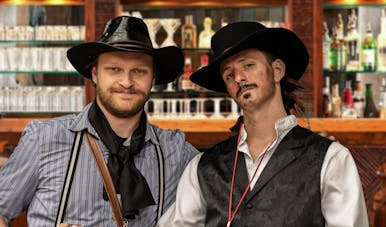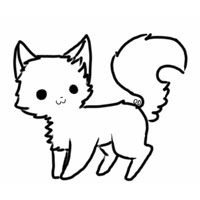
미국 카우보이의 역사는 사실 멕시코와 밀접하게 연결되어 있습니다. 오늘날 우리가 알고 있는 카우보이 문화는 멕시코의 전통적인 목동 문화인 "바케로(Vaquero)"에서 영향을 많이 받았어요. 카우보이의 상징적인 모습인 말 타기, 소 몰기, 카우보이 부츠와 모자 등의 특징은 사실 멕시코에서 시작된 것들이죠.
카우보이 문화의 시작은 스페인과 멕시코로 거슬러 올라갑니다. 16세기 스페인 정복자들이 소와 말을 아메리카 대륙에 들여왔고, 이들은 멕시코 북부에서 "바케로(Vaquero)"라는 목동 문화를 발전시켰어요. 베케로스는 가죽으로 만든 차파레호스를 입고, 로프(라리앗)로 소를 잡는 기술을 익혔죠. 이들이 바로 카우보이의 직계 조상입니다.
19세기 초, 미국이 텍사스를 합병하고 서부 개척 시대가 본격화되면서 멕시코 출신 베케로스의 기술은 미국 남부로 퍼져나갔습니다. 특히 1860~1880년대는 카우보이의 전성기였어요. 남북전쟁 직후 남부 경제가 붕괴되자, 텍사스에서는 방목되던 소 떼가 천만 마리 넘게 불어났고, 이 소들을 철도가 연결된 북부 시카고·캔자스로 몰아넣어야 했죠. 이때 "카우보이"라는 이름이 본격적으로 붙었습니다. "소(Cow)" + "소년(Boy)"의 조합이지만, 실제로는 숙련된 성인 남성들이 주를 이뤘죠.
영화 속 카우보이는 멋진 말 탄 채 총을 쏘며 악당과 싸우지만, 실제 삶은 극한의 노동이었어요. 하루 15시간 이상 말을 타고 소를 몰았고, 추운 겨울에도 눈보라를 뚫고 목장을 지켜야 했습니다. 월급은 당시 평균 노동자의 절반 수준인 25~40달러에 불과했죠. 게다가 인종적 다양성도 특징이었어요. 역사학자들은 카우보이의 1/4이 흑인, 1/8이 멕시코인이었다고 추정합니다. 백인 우월주의가 팽배했던 시대지만, 황야에서는 실력이 최고의 통치자였거든요.
카우보이의 필수 장비는 로프(라소), 광목 셔츠, 카우보이 부츠, 스텟슨 모자였습니다. 모자는 햇빛과 비를 막고, 부츠는 말 등에서 미끄러지지 않도록 높은 굽이 달렸죠. 음식은 간단한 빈즈 통조림과 건빵, 커피가 주를 이뤘어요. 여기에 민속 음악과 구전 이야기가 유일한 위안이었습니다.
서부극과 신화의 탄생
1880년대 후반, 철도 확장과 울타리 법으로 인해 카우보이의 시대는 막을 내렸어요. 텍사스에서 북부로 소를 몰아넣던 "장거리 이동"은 사라졌고, 목장은 철조망으로 구획되기 시작했죠. 하지만 카우보이 문화는 오히려 이때부터 미국 정체성의 상징으로 부각됩니다. 20세기 초 할리우드 서부극이 폭발적인 인기를 끌면서 말이죠. 존 포드 감독의 <역마차(1939)>나 클린트 이스트우드의 <황야의 무법자(1964)>는 카우보이를 용감한 개척자이자 법과 정의의 수호자로 신화화했어요.
이런 이미지는 컨트리 음악과 로데오로도 이어집니다. 행크 윌리엄스, 조니 캐시 같은 가수들은 카우보이의 외로움과 자유를 노래했고, 로데오 경기는 카우보이의 기술을 스포츠로 승화시켰죠. 심지어 패션도 영향받았어요. 리바이스 청바지는 원래 카우보이의 작업복으로 개발되었고, 지금도 카우보이 부츠와 벨트 버클은 전 세계에서 사랑받는 아이템이 되었습니다.
현대의 카우보이
오늘날 카우보이는 상업화된 문화 코드이자 지역 정체성으로 남았어요. 텍사스와 와이오밍에서는 여전히 대규모 목장이 운영되며, 현대식 카우보이들은 헬리콥터와 드론으로 소를 관리하기도 합니다. 매년 열리는 로데오 대회는 관광산업으로 자리잡았고, "어반 카우보이"라는 말까지 생길 정도로 도시에서도 카우보이 모자는 유행 아이템이 되었죠.
하지만 진정한 카우보이 정신은 자립심, 공동체, 자연과의 조화에 있습니다. 황야에서 살아남기 위해선 서로를 의지해야 했고, 소와 말은 생존의 동반자였어요. 이런 가치는 환경 보호 운동이나 협동조합 문화에서도 오늘날 재해석되고 있죠.
카우보이는 단순한 직업이 아니라 미국 정신의 알레고리예요. 개척, 자유, 모험을 상징하지만, 동시에 노동의 고통과 인종적 갈등의 역사도 함께합니다. 할리우드가 만든 신화 속 카우보이와 현실의 카우보이는 다르지만, 그들이 남긴 문화적 유산은 여전히 우리 곁에 살아있죠. 다음에 카우보이 모자를 쓰거나 웨스턴 영화를 볼 때면, 그 뒤에 숨은 150년의 이야기를 한 번쯤 떠올려보는 건 어떨까요?



 날으는 vvvovvv
날으는 vvvovvv
 텍사스 이주 이야기
텍사스 이주 이야기
 나니까 김치 연대기
나니까 김치 연대기

 텍사스 론스타 롱혼 스필릿
텍사스 론스타 롱혼 스필릿


 미국 기상청 뉴우스
미국 기상청 뉴우스
 맛있는거 다찾아먹기
맛있는거 다찾아먹기
 averagestudent
averagestudent